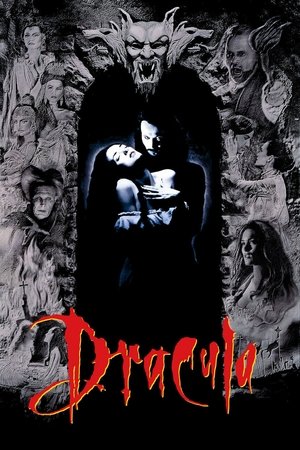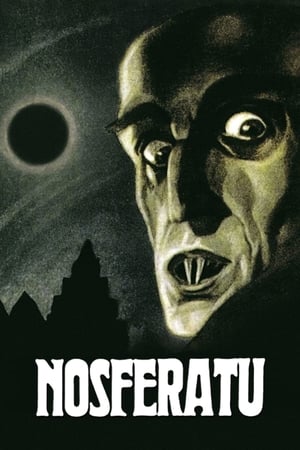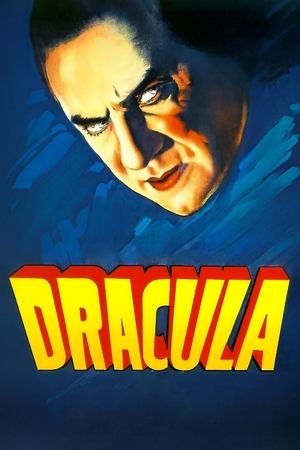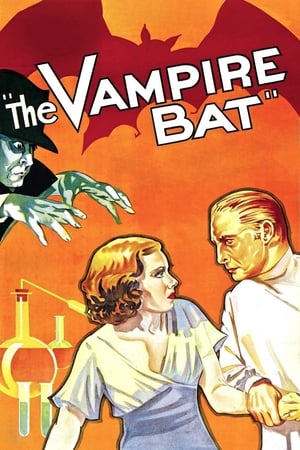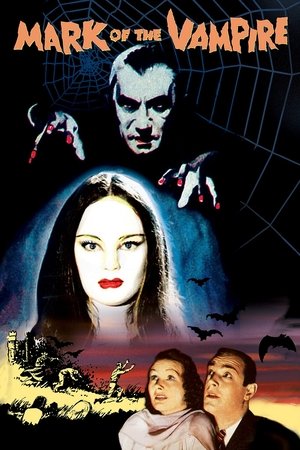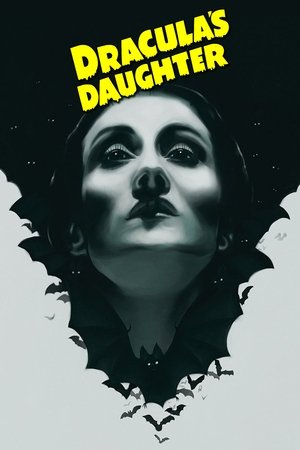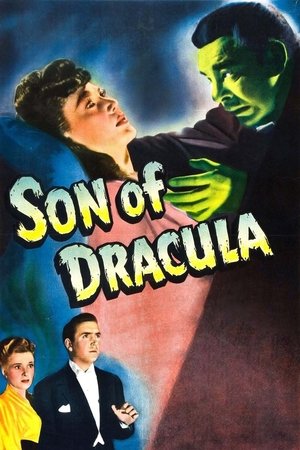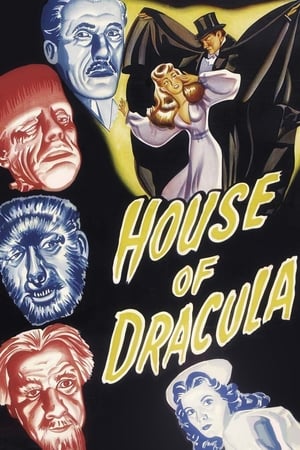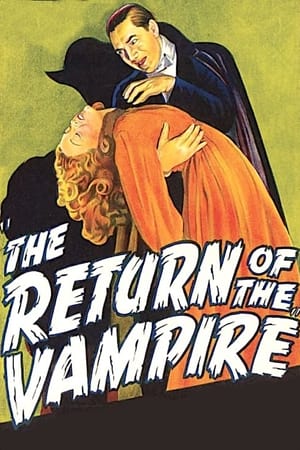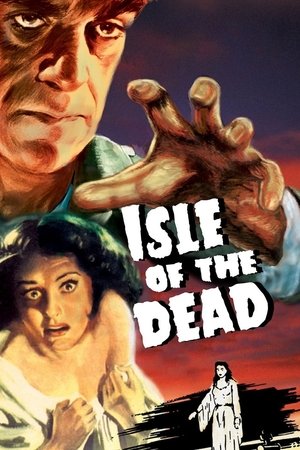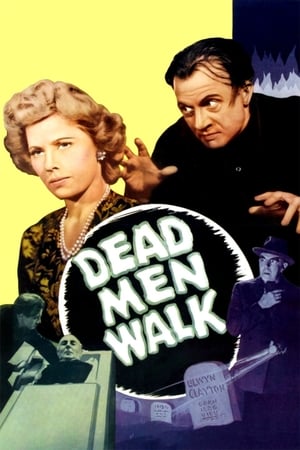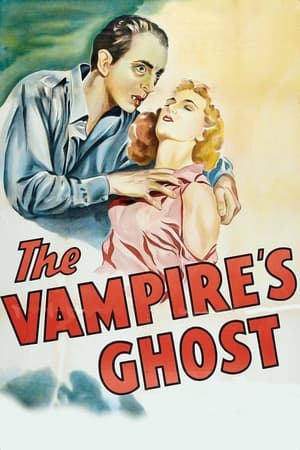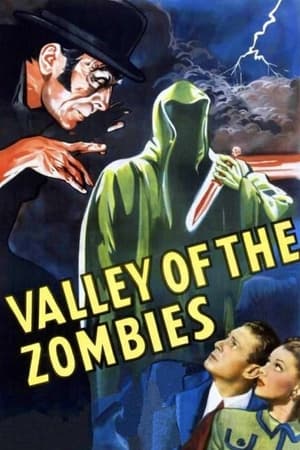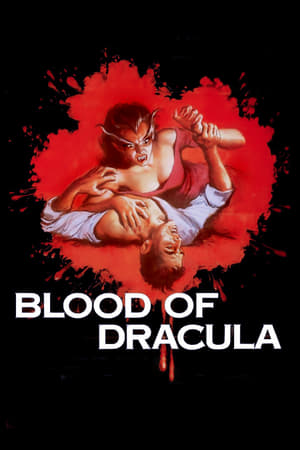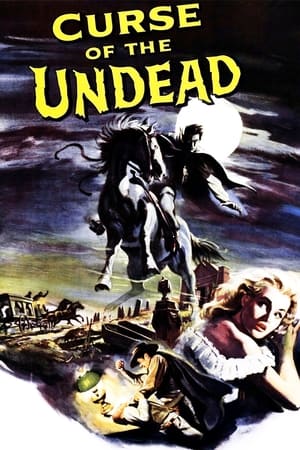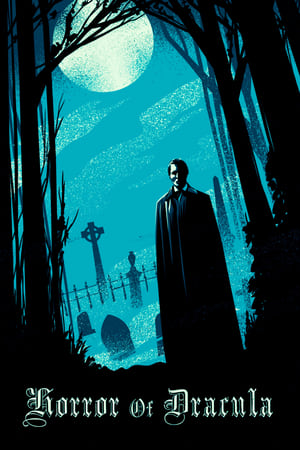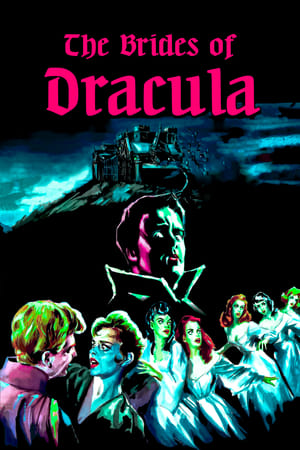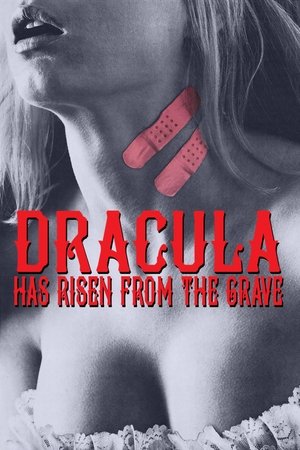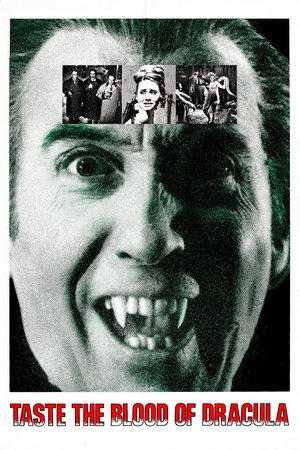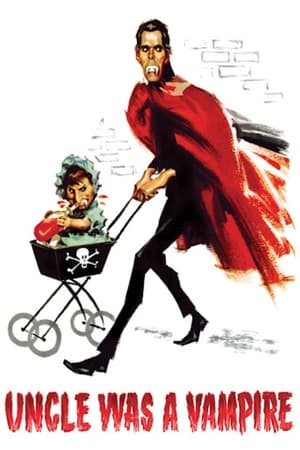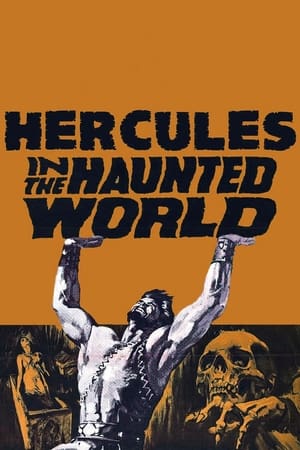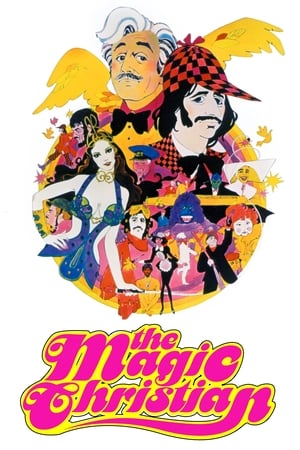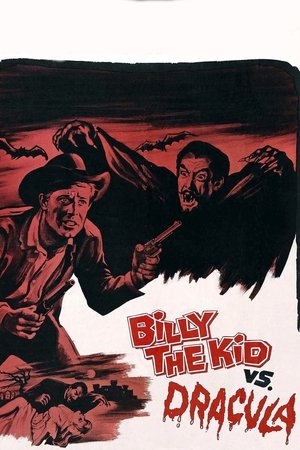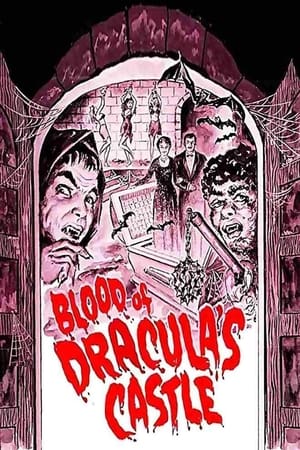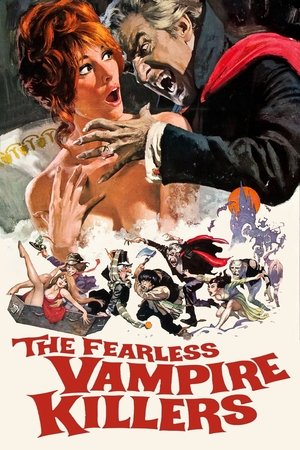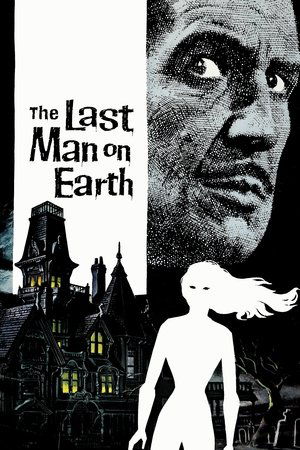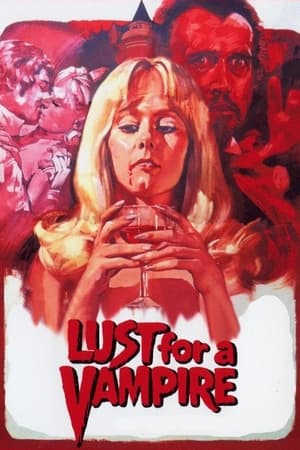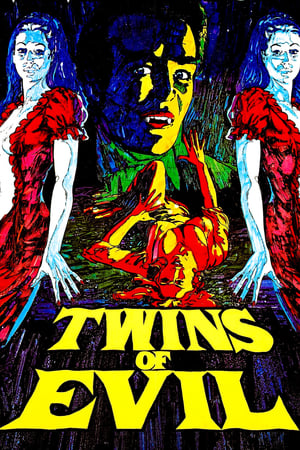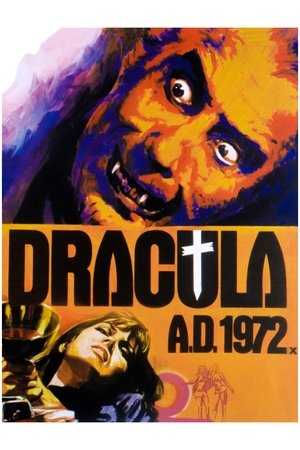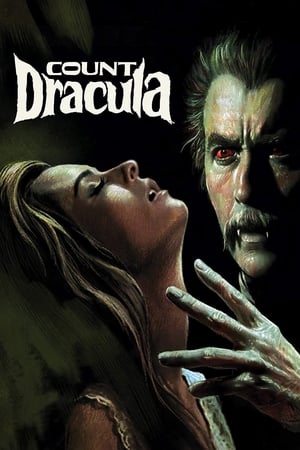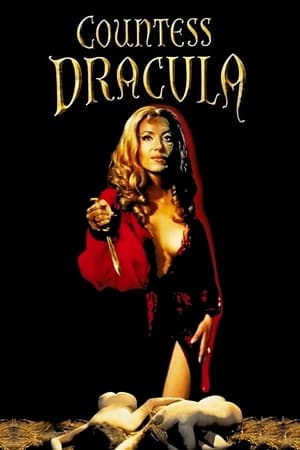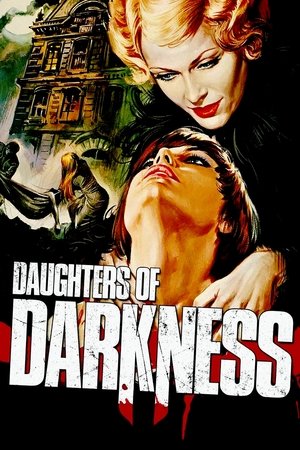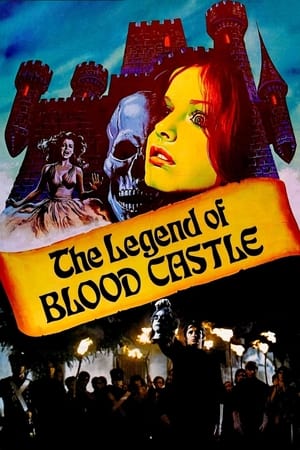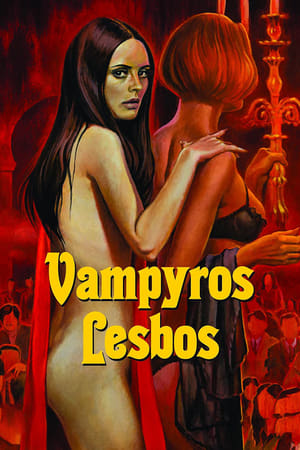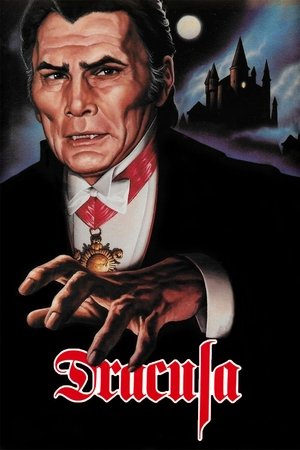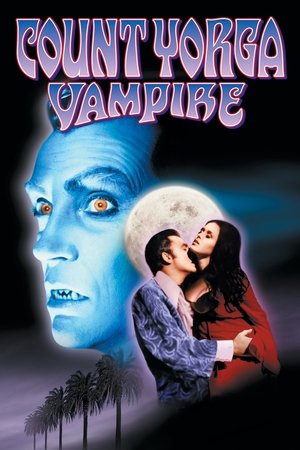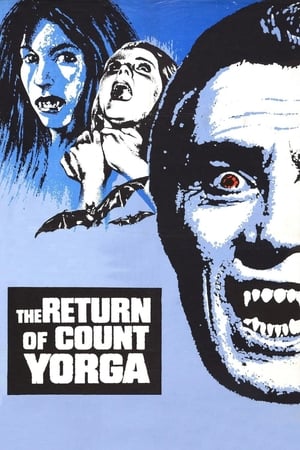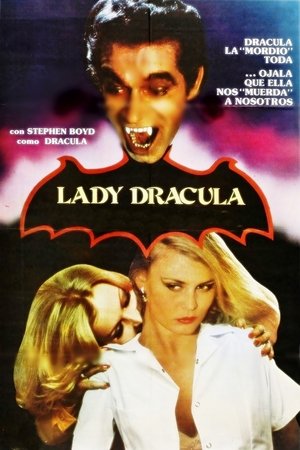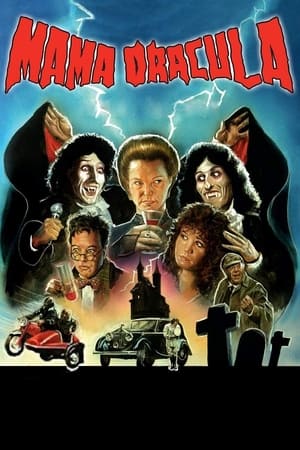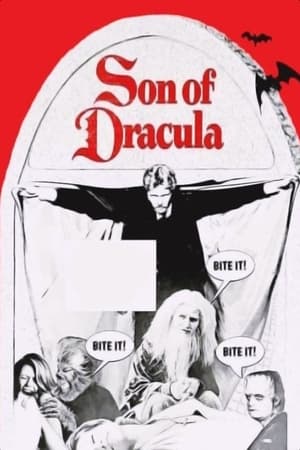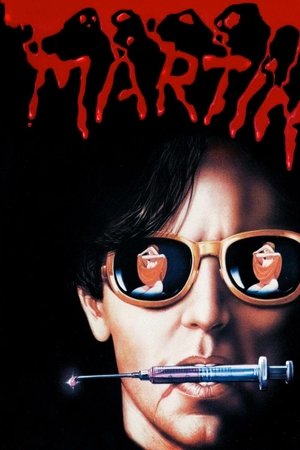Article: Fangs for the Memories: A retrospective of vampire movies Part 1: From the beginnings to 1979
Vampires are probably the oldest form of cinematic 'monster'. They have certainly been around in folklore and myth a lot longer than most of the standard horror movie monsters.

Vampires are probably the oldest form of cinematic 'monster'. They have certainly been around in folklore and myth a lot longer than most of the standard horror movie monsters.
Although myths, legends and folklore from just about every culture in the world has tales of creatures who would return from the dead to feed on the blood of the living it wasn't until the publication of Bram Stoker's book 'Dracula' in 1897 that the template for the cinematic vampire (that would last for many years) was formed.
However, there had been other significant vampire literature prior to Stoker that have since influenced and inspired film makers.

In 1818 John Polidori, personal physician to Lord Byron, produced a short story entitled 'The Vampyre: A Tale' (the first vampire tale to be published in English, incidentally) in which he based his vampire, Lord Ruthven (pronounced 'Ruv-en') on his employer, Byron. Polidori's vampire was a member of the aristocracy, the first vampire in literature to have a title. Ruthven was also described as being incredibly handsome. Women would hang on his every word and gaze upon him with admiration. This was a far cry from the animated corpses, their breath reeking of the grave that had been the norm in vampire literature up to that point.
In 1845 the 'Penny Dreadful', "Varney The Vampire or The Feast of Blood" appeared. Coming out in weekly installments, it ran for 220 chapters. Sir Francis Varney was depicted as a gaunt, evil fiend who eventually dies after throwing himself into a volcano.
In 1870 Joseph Sheridan Le Fanu wrote 'Carmilla'. A tale featuring (again, a first) a female vampire and ('Shock!! Horror!!) a suggestion of lesbianism.
However it wasn't until the publication of Stoker's novel that the idea of vampires and the 'frisson' of the un-dead really took a grip on the public's imagination. The book , which has never been out of print, was later adapted for the stage and ran successfully for several years in London and then later on Broadway.
' Moving Pictures' were still in their infancy when Stoker died in April 1912 but that didn't stop a German director by the name of F.W. Murnau from adapting Stoker's novel for the screen ten years after his death. He changed the character names and locations and simplified the plot but it was still basically the same story. The silent, atmospheric 'Nosferatu: Eine Symphonie des Grauens' (A symphony of Horror) was released in 1922. Stoker's widow, Florence, sued for breech of copyright and , winning the case, demanded that every copy be destroyed. Fortunately not all copies were destroyed and this silent masterpiece can still be enjoyed today.

The vampire in Nosferatu (a word that is wrongly believed to be a Romanian word for vampire or un dead but in fact doesn't exist in the Romanian language. It was a mistranslation from a text book by Stoker that gave us the word as we now recognize it) is called Graf Von Orlock, portrayed by Max Schreck, who's name means 'terror; in German, and is considered by many cinematic scholars to be one of, if not the best vampire movie ever and features the most horrendous looking of cinematic vampires. He is certainly no suave 'ladies man'! With his shaven head and huge hooked nose, dark, sunken eyes under thick bushy brows, pointed ears and rodent like teeth coupled with long talon-like nails he certainly looks hideous.
The next cinematic vampire to appear was not really a vampire at all. 'London After Midnight' starred Lon Chaney Snr as a Scotland Yard detective, Inspector Burke, who dresses as a vampire in order to trap a murderer. Chaney's appearance was quite striking if theatrical. Dressed in a very tall hat and a long coat with a bat winged cape , wild white hair and a double row of sharp animal-like teeth. He also had wire loops round his eyes to bulge them out and designed a special wire frame to go in his mouth that pulled his mouth into a deranged, rictus grin.
Sadly it is now generally accepted by cinephiles the world over that all copies of this silent classic have been lost or destroyed. A tragic shame.
It 1931 two very distinctive and different vampires films were released. Both, significantly, featuring foreigners in some way.
Danish born film maker Carl Dreyer released his dream like (and very surreal) 'Vampyr' in 1931. It has been called 'the last line in German Expressionist Films' and the influences of 'The Cabinet of Dr Caligari' and 'Nosferatu' are clear. The film itself is in German with what has been described as the worst subtitles ever and has almost no plot except to loosely follow the attempts of a young man to deal with an outbreak of vampirism in his village. Not to everyone's taste this film is too slow for some, and has very sparse dialogue. Dreyer sets out to un-nerve rather than frighten.
1931 also saw the release of the vampire movie that set the tone for the next thirty years.
Tod Browning's 'Dracula' with unknown Hungarian actor Bela Lugosi in the lead was a sensation when it came out. Originally, Lon Chaney Snr was earmarked for the role of the Count but his untimely death from throat cancer in 1930 forced the producers to look elsewhere. Lugosi had been playing the part successfully on stage for a number of years and his heavy East European accent seemed perfect for the part of a Transylvanian (although in Stoker's book Dracula speaks perfect, accent free English). However at this point Lugosi's English was still very poor and he learnt his lines phonetically. Lugosi's appearance in white tie and tails and opera cape is frankly ludicrous for an Eastern European aristocrat living in a ruined castle but it caught the public's imagination and stayed there and as a result that is how vampires, and Dracula were depicted in movies for the best part of 30 years.
The image of the Count in a high collared cape was a result of stage effects. In the original stage production the Count would wear a cape with a high collar so he could turn his back to the audience and drop through a trap door and effectively 'disappear', the collar hiding his head as it dropped from sight. His 'empty cape' would then flutter to the ground.
Lugosi was paid only $3,500 for his starring role in 'Dracula' and it became a career high point and the precursor of a long decline.
'Dracula' was also the first of Universal's new genre of films, 'The Horror Film'. Released during the Depression it was the studio's first hit in two years and type cast Lugosi for life. Despite it's very obvious stage origins it established the vampire in the public's consciousness.

Interestingly, while Tod Browning was shooting 'Dracula' by day, the same sets were being utilized by director George Metford (but with a cast of Latino actors) to make a simultaneous Spanish language production. It starred Carlos Villarias as The Count and is better paced and photographed than Browning's version. Villarias makes an effective Dracula although out-takes of Lugosi were used in some long shots.
Despite Dracula's success the studios were slow to exploit the new found popularity of the vampire. Over the next few years the un-dead were only utilized in low budget independent productions such as 'The Vampire Bat' in 1933 and 'Condemned To Live' in 1935.
By 1935 Lugosi was already trading on his Dracula image at another studio. He was so associated with the role of the Count that even when (for copyright reasons) he was playing a different vampire the public knew who he was meant to be. In 1935 Tod Browning remade 'London After Midnight' as 'Mark of The Vampire'. Lugosi was third on the bill as 'Count Mora' in what amounted to little more than a supporting role.
Universal inexplicably waited until 1936 before making a sequel to the original with 'Dracula's Daughter'. Only Edward Van Sloane as Van Helsing returns from the cast of the original film. Universal showed it's waning interest in the genre by churning out nothing more than a routine 'bill filler'.
Right at the tail end of the 1930's Humphrey Bogart appeared as a vampire in his only horror film. Made by Warner Bros and originally meant as a starring vehicle for Boris Karloff , Bogart plays the eponymous Doctor in 'The Return of Dr X' . With a white stripe through his hair and his marble like pallor, he plays Marshal Quesne who is returned to vampiric life by blood transfusions.By the start of the 1940's Lon Chaney Jr, even though he would never be the actor his father had been, had still managed carved a bit of a niche for himself in Hollywood. He had followed in Karloff's footsteps by playing the Frankenstein monster ('The Ghost of Frankenstein' [1942]) and The Mummy ('The Mummy's Tomb' [1942]) and had made at least one movie monster completely his own, the lycanthrope Larry Talbot ('The Wolf Man'[1941]) so it was almost inevitable that eventually he would be asked to play Dracula.
In 1943 Universal made 'Son Of Dracula' starring Chaney Jr but the stylish blend of vampires and witchcraft, it's New Orleans setting and some rather stylish effects (including a neat man-into-bat transformation and Chaney's coffin rising from the bayou to float ashore on a cloud of mist), the movie going public were beginning to become bored by the Gothic chills that Hollywood was serving up. The World had been at war for almost five years even though the USA had only been actively involved since 1941. Suddenly the fear of war was far scarier than anything Hollywood could dream up!
The waning interest made Universal bring out 'Frankenstein meets The Wolf Man'(1943) and figured that if two monsters can increase box office then 'the more monsters the better' became the notion. This gave us 'House of Frankenstein' and 'House of Dracula' in 1944 and 1945 respectively. Both these films featured Shakespearean actor John Carradine as the suave Count. Looking gaunt and sinister he played Dracula in the traditional evening dress and opera cape, and had a moustache (Stoker's original Count was moustached, a character trait only Chaney Jnr had used before in 'Son Of Dracula'). It's worth mentioning that, second to Christopher Lee, Carradine played Dracula in more movies than any other actor.

Lugosi was never even considered for either film although he crops up in another Dracula-clone role as Armand Tesla in 'The Return of The Vampire' (1943). Unfortunately, cheapo quickies like 'The Devil Bat' (1940) and 'Zombies on Broadway' (1945) were more indicative of Lugosi's waning career.
Meanwhile Boris Karloff, Lugosi's some time co-star, was fairing a bit better. His presence in Val Lewton's under rated study of vampire mythology, 'Isle of The Dead' considerably enhances the film. But by this time Hollywood was restricting it's bloodsuckers to basically mediocre b-movies such as 'Dead Men Walk' (1943), 'The Vampire's Ghost' (1945) and Valley of The Zombies' (1946).
It was left to Universal to bring to a close the second great horror cycle. They decided to unite their stable of monsters one last time (together with a large dollop of comedy) to bring out 'Abbott and Costello Meet Frankenstein' (1948). It seemed only proper that Lugosi should return to play Dracula for one last time and in doing so, after being at the beginning of the first horror boom of the 1930's, found himself at the end of the second horror boom of the 1940's.
By the start of the 1950's man had split the atom, the radioactive horrors of Hiroshima and Nagasaki were still fresh in people's minds and the world would never be the same again.
In the 1950's Sci-Fi was becoming the big thing. Vampires started to take on a slight 'scientific' slant with films like 'The Vampire'(1957) and 'Blood Of Dracula',(1957) or else were completely removed from their usual environment and re-located to such odd places as the wild west ('Curse of the Undead' [1959]) or suburban Southern California ('The Return of Dracula' [1957]).
By the 1950's Lugosi was appearing in such dross as 'Old Mother Riley Meets The Vampire' and 'Bela Lugosi Meets a Brooklyn Gorilla' (both 1952). Lugosi finally died of a heart attack in 1956 aged 73 while in hospital for drug addiction. He was buried wearing his Count Dracula cape and ring.
In 1957 'Dracula' was released to US television as part of Universal's 'Shock Theater' package and prompted a huge revival of interest in the character.
Meanwhile, in the UK, a small studio who had had some success adapting the BBC TV series Quatermass into two low budget Sci-Fi films decided to have a crack at re-making 'Frankenstein'. Hammer's 'The Curse of Frankenstein' was the biggest dollar earner from a British studio that year and after it's success teamed it's two stars, Christopher Lee and Peter Cushing, in 'Dracula' (US title 'Horror of Dracula'). This , for many people, was the turning point in Vampire cinema.
Up until this point vampires in movies would raise their cape as their mouth moved towards their victims throat effectively masking the actual bite. Also, all vampire movies up to then had been made in black and white. Hammer changed all that.

Christopher Lee is for many people the 'definitive' Dracula. Standing six feet and six inches in height he certainly dominated the screen. As described in Stoker's original he wears black from head to foot (no white tie and tails for him!) except for the blood red silk lining of his cape (that didn't have a large, stand up collar). Also Lee's Dracula had no trace of an accent. He is charming, urbane, and erudite…but totally evil.
However the main difference to any vampire predecessors was that this Dracula had fangs! Big, sharp canines and the audience weren't protected from them. They would see Lee bare his fangs and sink them into his victims neck. The blood would flow freely. Dracula's eyes would turn blood red, his mouth was smeared with gore. Also when Cushing, as Van Helsing staked Dracula's victims the blood would spurt and spray. And all in lurid colour for the first time. This had never, ever been done before. It was ground breaking stuff.
The final showdown between Van Helsing and Dracula is a great battle between the two stars(with Cushing doing all his own stunts in the fight scene). Finally, leaping across tables to rip down heavy curtains and flood the room with sunlight , Dracula is caught in the rays and fizzes, blisters, smokes and finally dissolves away to dust. A graphic change from earlier films effects: camera fade out and then just a pile of ashes. The film was an even bigger success than the previous year's 'Curse of Frankenstein'. The Hammer Age of Horror' had begun and soon the floodgates would open.
Hammer started the third great horror cycle with it's lurid colour remakes of some of the old Universal classics and was quick to exploit it's growing reputation as 'The House of Horror'.
Peter Cushing was back as Van Helsing in 'The Brides of Dracula'(1960) which didn't actually feature Count Dracula but another aristocratic vampire , Baron Meinster. He was eventually thwarted by the cross shaped shadow of a windmill's sails. 'Kiss of The Vampire'(1962) was next up and had neither Cushing or Lee in it. This is still a stylish film though with a nice plague of (animated) bats called up by the 'Van Helsing' like Dr Zimmer to destroy the evil vampire cult.
In 1965 Lee relented and donned the cape and fangs again to play the eponymous Count in 'Dracula: Prince of Darkness'. Made as a direct sequel to Dracula and including the final few minutes of the original film it tells , rather un-originally, of a group of travelers in the Carpathians forced to spend the night in a old, eerie castle. The tension is slow to build and Dracula doesn't make an appearance until a third of the way through the film. Lee doesn't have any dialogue at all but imbues the character with a powerful sense of evil. Peter Cushing's presence as Van Helsing is sorely missed but Andrew Keir is good as a larger than life Vampire killing monk.
Lee was back again for 'Dracula Has Risen From The Grave' (1968) and 'Taste The Blood of Dracula' (1969) but was not adverse to playing other vampires in such films as 'Uncle Was A Vampire'(1959), 'Hercules in The Haunted World'(1961), 'Theatre of Death'(1966), 'The Blood Demon'(1967) and 'The Magic Christian'(1969)
Meanwhile, in Italy, stylistic film makers like Mario Bava ('Black Sunday'[1960], 'Black Sabbath'[1963], 'Planet of the Vampires'[1965]) , Antonio Margheriti,( 'Castle of Blood'[1964] ) and Riccardo Freda ('The Horrible Dr Hichcock' [1962] ) were all giving their own personal, dark twists to vampire tales. In Mexico films featuring the vampire Count Nostradamus, played by German Robles, were still popular after their debut in the 50's. Mexicans also got to see movies starring the silver masked wrestler 'Santos' pitted against a variety of un-dead opponents.

John Carradine , who had been appearing in some very dubious quality films since the late 40's, once again donned his top hat and tails (and a goatee and 'tache combo) to play Dracula in the truly awful and ridiculously cheap 'Billy The Kid Versus Dracula' (1965) Directed by William Beaudine it was a bizarre western/horror hybrid and sister film to the equally awful 'Jesse James Meets Frankenstein's Daughter'. Carradine also crops up as an evil butler in 'Blood of Dracula's Castle'(1967) and as a vampire leader in the Mexican made film, 'Las Vampiras'(1968)
In 1967 Roman Polanski directed and appeared in 'Dance Of The Vampires' (a.k.a The Fearless Vampire Killers'). This amusing but downbeat horror comedy features Polanski as the assistant to Prof. Abronsius (Jack McGowran) who travel to Transylvania to kill Count Von Krolock (Ferdy Mayne) who is terrorising the local villages.
The actual 'dance' of the title is a wonderfully costumed and choreographed macabre set piece. However when the film was released in the US it had at least 10 minutes of footage removed and an animated title sequence added. Polanski, understandably asked for his name to be removed from that version. It is unique in so much as it is the first vampire movie to feature a gay vampire and a Jewish vampire, too!
1961 also saw the release of the first adaptation of Richard Matheson's novel 'I Am Legend' entitled 'The Last Man on Earth'. Matheson originally wrote the screenplay for Hammer in 1957. They eventually sold it to producer Robert L. Lippert who made it, very cheaply, in Italy for 20th Century Fox who then passed it on to AIP. Despite being passed from pillar to post it is still a pretty fine adaptation. Vincent Price stars as scientist, Morgan the last survivor of a wind borne plague that wipes out everyone else and turns them into pasty faced zombie like vampires. Price gives a surprisingly restrained performance, his voiceover reading like a diary of despair as he daily disposes of the vampires he killed the previous night. The vampire make up appears to have been somewhat influential on the zombies for Romero's 'Night of the Living Dead'(1969).
As the swinging sixties became the sexy seventies the emphasis of Hammer's vampire output seemed to be on heaving bosoms and gratuitous nudity. In 1970 Hammer released 'The Vampire Lovers', (an adaptation of Joseph Sheridan La Fanu's story 'Carmilla') with the lesbian subplot brought to the fore. Ingrid Pitt was actually too old to convincingly play the young, seductive Carmilla but the addition of Peter Cushing is a bonus and the higher budget than normal for a Hammer film is reflected in it's excellent production values. This was followed, very quickly, by two sequels and the three films came to be known as 'The Karnstein Trilogy' (after the name of the vampire's family). These were 'Lust For A Vampire' ( 1970) and 'Twins of Evil'(1971). The former has little to do with Le Fanu's original story. It features a 19th century girls finishing school where one of the students is a reincarnation of a vampire. Plenty of excuses for gratuitous nudity and lesbian relationships between the girls there, then! Ralph Bates gives a good performance in a role originally intended for Peter Cushing and Yutte Stensgaard is the seductive and voluptuous 'Carmilla Karnstein'. However production values slip somewhat. Mike raven plays Count Karnstein with a dubbed voice. The vampires seem to be quite capable and happy to wander about in broad daylight ,too. Director Jimmy Sangster utilizes sets from 'Scars Of Dracula'(see below) and even uses a shot of Christopher Lee's bloodshot eyes, even though he's not actually in the film. In one scene the camera crew are plainly visible! 'Lust For A Vampire' is easily Hammer's most sexually explicit film and this resulted in it receiving an 'R' rating in the U.S.

'Twins of Evil' starred Cushing as Gustav Weil, a Puritan witch hunter and introduced Playboy magazine's first twin centerfolds (Oct 1970) the Collinson twins, Mary and Madeleine. Damien Thomas is Count Karnstein who can walk around in daylight (must be a particular trait of the Karnsteins). Despite some mild sex scenes and serious gore the direction of John Hughes makes this one of Hammer's better efforts.
Christopher Lee was back as Dracula in 'Scars of Dracula' (1970). This wasn't a sequel to any film that had gone before and had Dracula back in Transylvania where he is revived by an unconvincing bat vomiting blood onto him. The script really has nothing new to offer: squeaky clean 'innocents' who find themselves unwitting guests of the Count. Despite including one or two elements from Stoker's original story (Dracula crawling down the castle wall for example) it's little more than an excuse for more nudity with Anoushka Hempel as a sensuous vampire and some mild S&M with Dracula whipping his servant.
By this time Lee was fed up with the way the script writers kept reviving the character and vowed not to play the Prince of Darkness any more.
However he relented two more times when Hammer brought the Count into the 20th century with 'Dracula A.D 1972' and 'The Satanic Rites of Dracula'(1973). The former had him revived by a group of 'groovy young things' out for a bit of a thrill and the latter had Dracula as a sort of evil Howard Hughes type recluse. Peter Cushing turns up in both as the grandson of the original Van Helsing. Both films are poor entries in the series and were the very last times Lee would play Dracula for Hammer. Although he was happy to play the character for a number of non Hammer projects including 'One More Time'(1970). This was no more than a cameo with Peter Cushing as Dracula and Baron Frankenstein. He also played the Count in 'Bram Stoker's Count Dracula'(1970) which has Dracula appearing as Stoker described him: White haired and moustached only getting younger after drinking blood. Lee dominates the film (when on screen) and has more to do than in the Hammer sequels. Herbert Lom gives good support as Van Helsing as does a manic Klaus Kinski as Renfield.
Lee also made the excellent documentary 'In Search Of Dracula'(1971) which was filmed on location in Transylvania.
Peter Cushing made his final appearance for Hammer as Van Helsing in the horror/martial arts film 'The Legend of the 7 Golden Vampires' (1974). The last vampire movie made by Hammer it was made in conjunction with Chinese Kung Fu film producer Run-Run Shaw to cash in on the Kung Fu craze that had swept the USA and UK in the early 70's. John Forbes-Robertson plays Dracula briefly in the final scenes of the film.
Dracula wasn't the only bloodsucker in Hammer's stable and during the seventies churned out a number of decent vampire movies all with the Hammer trademark of lurid gore and gratuitous nudity. 'Vampire Circus'(1971) had a very tight shooting schedule and the result is a very tightly edited film with a somewhat dream-like quality to the story line. The story has another aristocrat vampire, Count Mitterhouse being revived from the grave by the travelling vampire circus troupe to wreak revenge on the villagers who staked him.

The real life 'Blood Countess', Elizabeth Bathory was given the Hammer treatment in 1970 with 'Countess Dracula' starring Ingrid Pitt. Although based on a true story of a 17th century Hungarian Countess who believed bathing in virgin's blood would keep her youthful, this film doesn't come anywhere near the real horror of Elizabeth's reign of terror. In the film she kills three girls before she is found out. In reality the figure was close to 650 deaths before anything was done.
Elizabeth Bathory was also the inspiration behind 'Daughters of Darkness'(1971) and 'The Legend of Blood Castle' (1972).
A few more variations on Le fanu's 'Carmilla cropped up as well with 'Vampyros Lesbos Die Erbin Des Dracula' (1970/74). This was a Spanish/German co production filmed in Turkey by Jess Franco. It combines elements of 'Carmilla' with the tale of Elizabeth Bathory and bits of Stoker's 'Dracula's Guest'. The German version (1971) contains a lot more sex and violence than the Spanish version released in 1974.
' The Velvet Vampyre'(1971) and 'Vampyres'(1974) also exploit the 'lesbianisn' factor to the full. Then we have the arty, semi amateur excesses of French director Jean Rollin whose films were almost 'home movies'. He used friends and relatives as actors even if they had no obvious dramatic talents. He would use real locations and almost make up the stories as he went along. His films are slow moving with very little dialogue but have loads of atmosphere, stylish costumes and lots of exposed flesh, lesbianism and sexual content but very little shock value.
The 70's saw a whole plethora of actors take on the character of Dracula including: Jack Palance in 'Dracula' (1973) a version made originally for US TV and released into theatres abroad. The script by, Richard Matheson, borrows heavily from the '58 Hammer version.
Frank Langella played a very sexual, Byron-esque Count in the 1979 version of 'Dracula' re-creating his role from the hit Broadway stage presentation.
David Niven played the Count in the spoof 'Vampira'(1974)
George Hamilton also played the Count for laughs (and with a tan!!??) in 'Love at First Bite'.
And Klaus Kinksi starred in Werner Hertzog's re-make of 'Nosferatu' called 'Nosferatu The Vampyre'(1979).
Through out the 70's there was a glut of vampire movies from the more main stream to the more extreme and exploitative styles of such films as: 'Blacula'(1972) which has an African Prince, once bitten by Dracula coming to the USA to seek that old plot device, 'the reincarnation of his dead wife'.
'Deafula'((1975) was a version performed entirely in sign language (I'm not making this up)
We had 'Count Yorga, Vampire'(1970) and it's sequel 'The Return of Count Yorga'(1971) with Robert Quarry as the vampire with an impressive display of teeth (reminiscent of Chaney's teeth in ' London After Midnight'). We were also treated to 'Lady Dracula'(1977), 'Mama Dracula'(1979), singer songwriter Harry Nilsson in 'Son of Dracula'(1973), and even 'Dracula's Dog'
(1977). The family connections continued when 79 year old John Carradine, his hands twisted and gnarled now with arthritis played the Count for the last time in 1979 in 'Nocturna, Grand Daughter of Dracula'.
Through out the seventies there were all sorts of twists on the vampire/Dracula themes. The so-called 'Andy Warhol's Blood for Dracula' has Udo Kier in search of 'wur-gins' in Italy in the 1930's. The finale of this has Dracula having both arms and legs hacked off before being staked. The porn trade got in on the act with films like 'Count Erotica, Vampire'(1971) and the softcore 'Spermula'(1975) again with Udo Kier.
Arguably the three most important vampire movies of the 1970's are George A. Romero's 'Martin'(1976), 'The Night Stalker'(1972) and Tobe Hooper's mini series and eventual film ''Salem's Lot ' (1979).

'Martin' has John Amplas making his debut as the disturbed 18 year old who thinks he's a vampire but uses razors and syringes rather than fangs. His superstitious uncle thinks he is the real thing and the audience is never quite sure if Martin really is the 84 year vampire he claims to be. It's abrupt ending is particularly harrowing and unexpected. This was vampire as psychopath. Is he really a vampire or does he just think he's one?
' The Night Stalker' has Darren McGavin as journalist Carl Kolchak and was the first of two made for TV movies that were the pilot for the series 'Kolchak: The Night Stalker'. The script is by Richard Matheson from an unpublished novel by Jeff (husband of Anne) Rice. When this stylish thriller was first shown on TV in America it was the highest rated TV movie ever! It was to spawn a successful, long running TV series. Thus being the first 'serious' vampire related movie to make the transition to a TV series. The TV viewing public effectively 'invite the vampire into their homes' as it were.

'Salem's Lot' was originally a TV mini series stretching over three hours and based on Stephen King's spooky tale of small town vampires. The screen play remains surprisingly faithful to the original book while condensing the plot and characters. The story tells of a writer (David Soul) returning to the town he was raised in to relive his fears about the 'spooky Marsden House'. The house is now occupied by the Nosferatu like vampire Kurt Barlow (Reggie Nader) and his human accomplice, Straker (James Mason).
The series brought the vampire from it's foreign hunting ground to right into small town America, and as it was on TV, into our very homes. Places we recognised, not far flung foreign locations. We watched as one by one the townsfolk are turned into vampires. The three hour mini series was edited down for theatre and video release but the plot suffers from the edits even though there is more gore in the big screen version.And with that I bring to a close the first part of this retrospective of the cinematic history of vampires.
A second article covering 1980 until the present will be forthcoming.
I'm indebted to Stephen Jones' invaluable book 'The Illustrated Vampire Movie Guide' for most of the movie data in this article.
